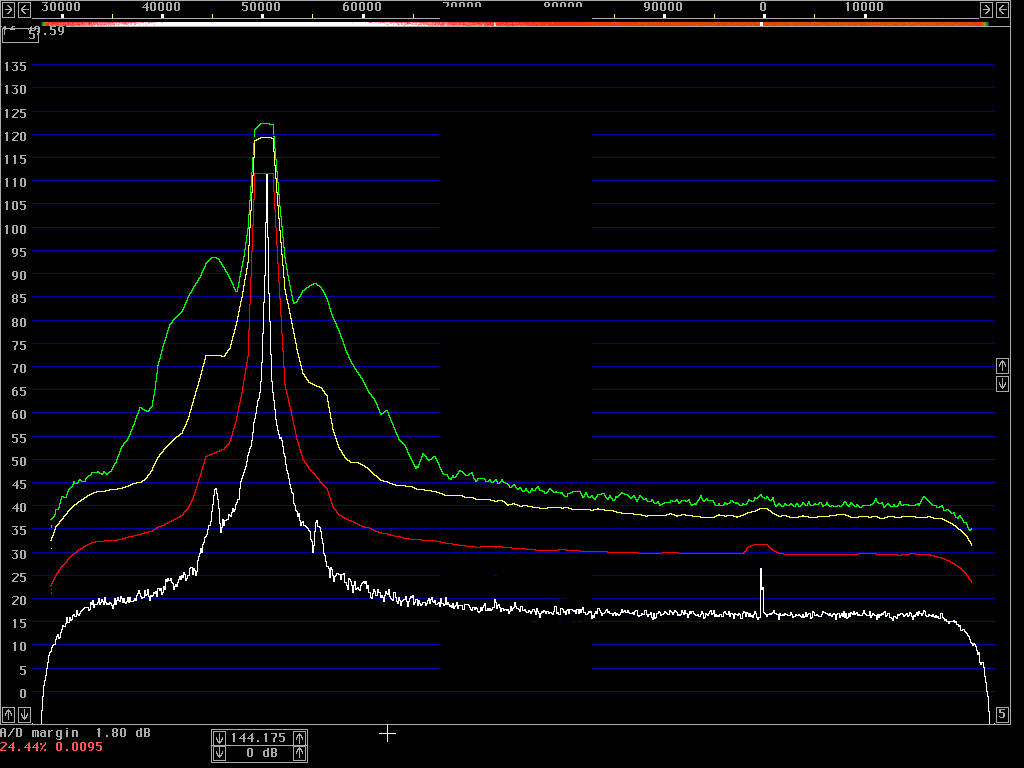
Transmitter testing with Linrad in the time domainWith Linrad-01.21 a time domain oscilloscope showing the RF envelope was introduced. The screen dumps on this page were made with Linrad-01.22 which also shows frequency in the time domain. The purpose of this page is to show the usefulness of time domain plots of amplitude and phase when trying to find out the reasons why a transmitter suffers from keying clicks.IC706MKIIG on 144 MHz with reduced powerThe IC706MKIIG produces some keying clicks on 144 MHz, when run at reduced power. Fig 1 shows the spectrum when I have hand keyed an IC706MKIIG at normal speed with a power setting of "4". |

|
|
Fig.1. The spectrum of a hand keyed IC706MKIIG. The frequency is 144.15 MHz and the power setting is "4" The ALC generated keying clicks are much smaller on 144 MHz as compared to on the HF bands. Note that the average power spectrum (red) is much lower than the peak power spectrum (green). This is because the ALC acting is small and that therefore the ALC does not have the time to recover except at word boundaries. Note that the spectrum is not quite symmetric. The keying click peak power is about 6 dB higher at the low frequency side. This can not be pure AM modulation. Fig. 2 shows the a key-down that was preceeded by a word space. |
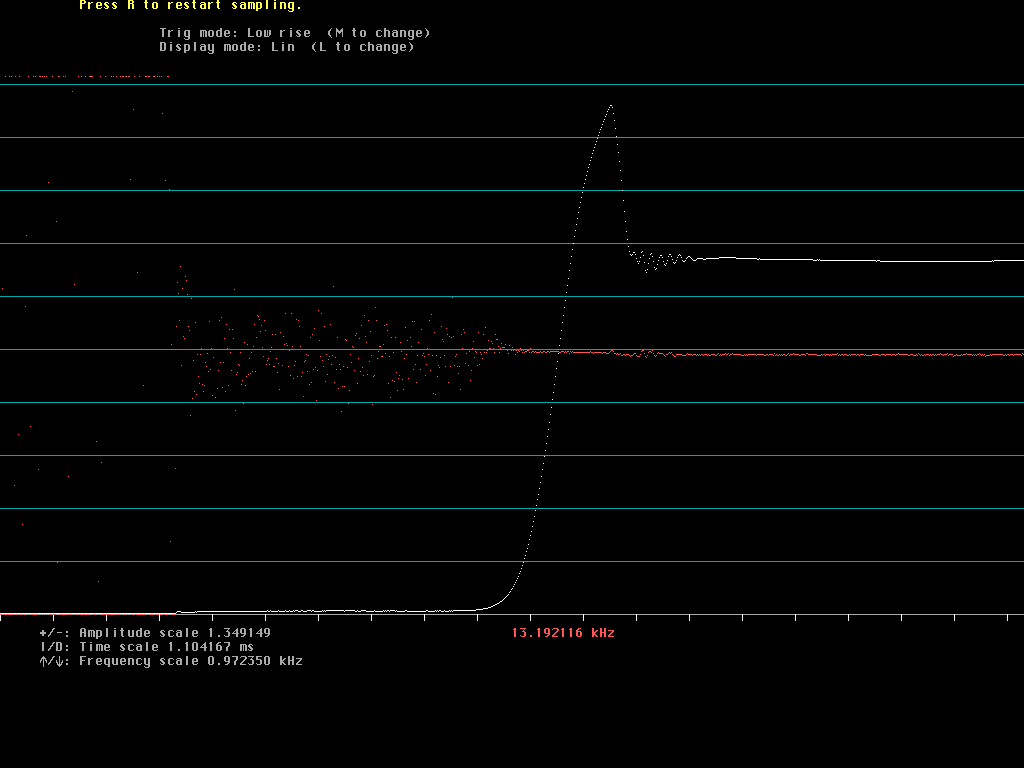
|
|
Fig.2. The RF envelope (white) of a key-down transition in linear scale and the frequency (red) of an IC706MKIIG operated like in fig.1. Fig. 2 shows that the ALC circuit is not only an AM modulator. It is a phase modulator as well. The frequency swing is about 150 Hz peak to peak and the FM sidebands are in phase with the AM sidebands on the low frequency side while the AM and FM sidebands are in opposite phase at the high frequency side. The AM sidebands are about three times stronger than the FM sidebands. Fig. 3 shows the same sequence as fig. 2 but with a logarithmic scale for the envelope power. |

|
|
Fig.3. The same data as in fig. 2 with 10 dB per division for the RF envelope. It is clear from fig. 3 that the carrier is switched on abruptly at a power level of -40 dB with respect to full power. The keying clicks from this transition are wide, but not strong enough to dominate over the noise sidebands of the pure carrier. Fig 4 and fig. 5 show the key-up transition in linear and logarithmic scale respectively. |

|
|
Fig.4. The key-up transition of an IC706MKIIG operated as in fig. The RF envelope is in linear amplitude scale. |
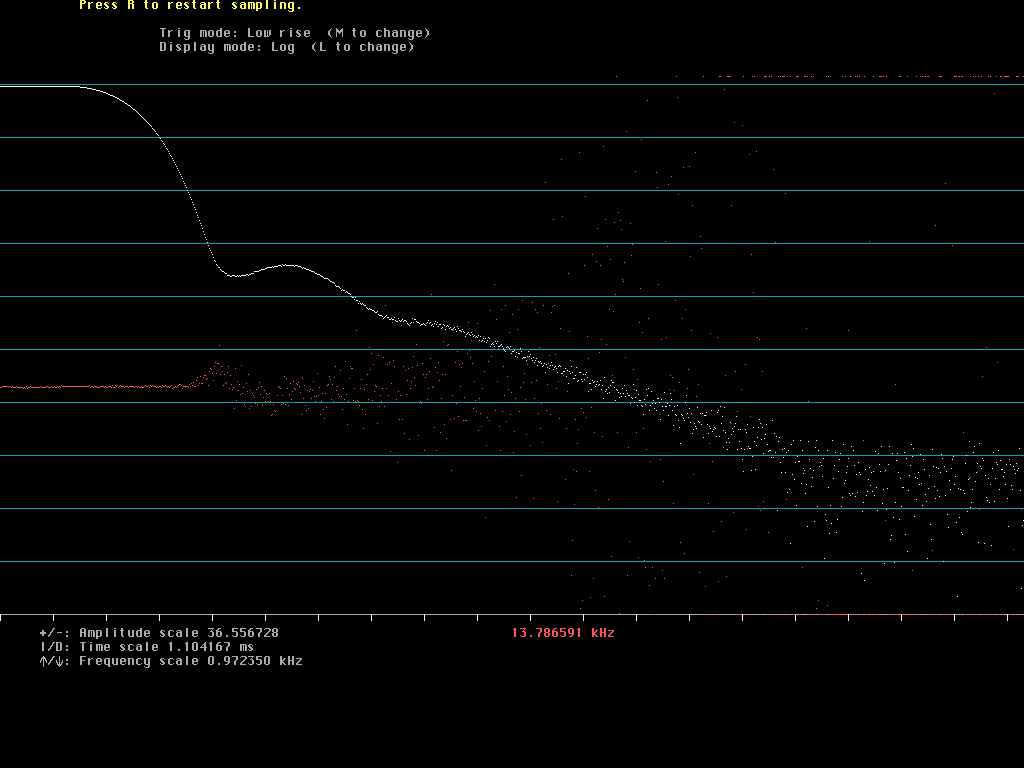
|
|
Fig.5. The key-up transition of an IC706MKIIG operated as in fig. The RF envelope is in log scale, 10dB per division. As can be seen from fig 4 or fig 5, the key up transition does not create keying clicks far away from the carrier. Neither AM nor FM. IC706MKIIG on 144 MHz with full powerAt full power "H" on the display, the ALC is not much active. It does not oscillate and the keying sounds much better as can be seen on the spectrum in fig. 6. |

|
|
Fig.6. The spectrum of a hand keyed IC706MKIIG. The frequency is 144.15 MHz and the power setting is "H" (full power). Fig. 7 shows the key-down transition in linear amplitude scale and fig. 8 shows the key-down transition in logarithmic scale. |
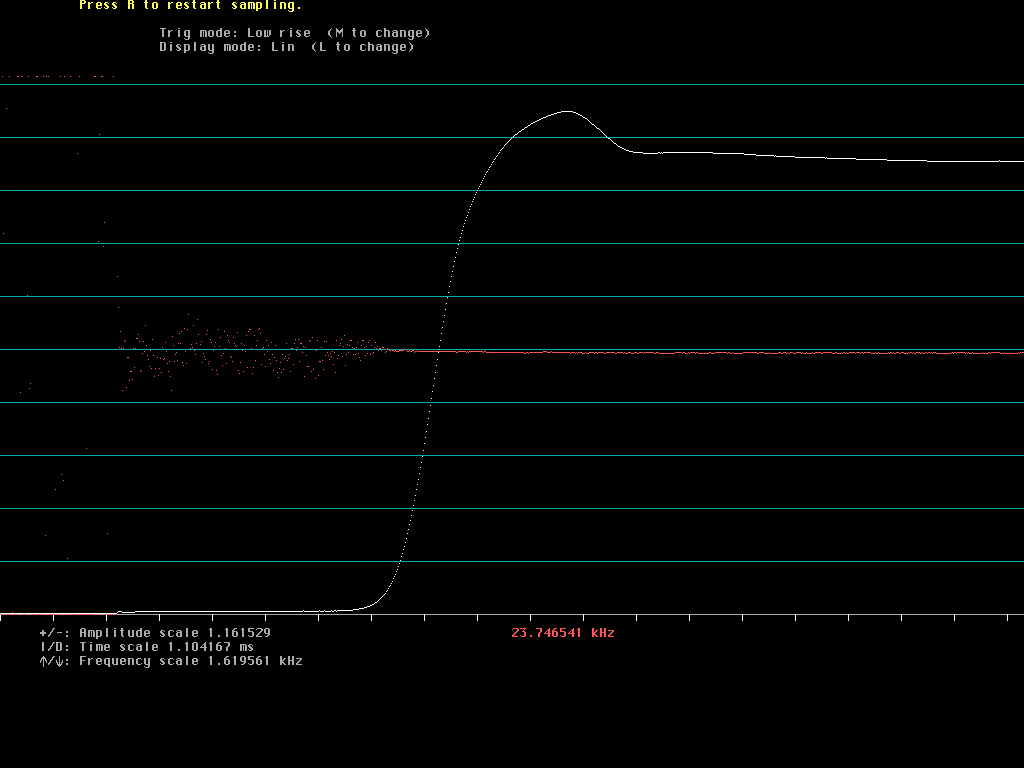
|
|
Fig.7. The RF envelope (white) of a key-down transition in linear scale and the frequency (red) of an IC706MKIIG operated like in fig.6. |
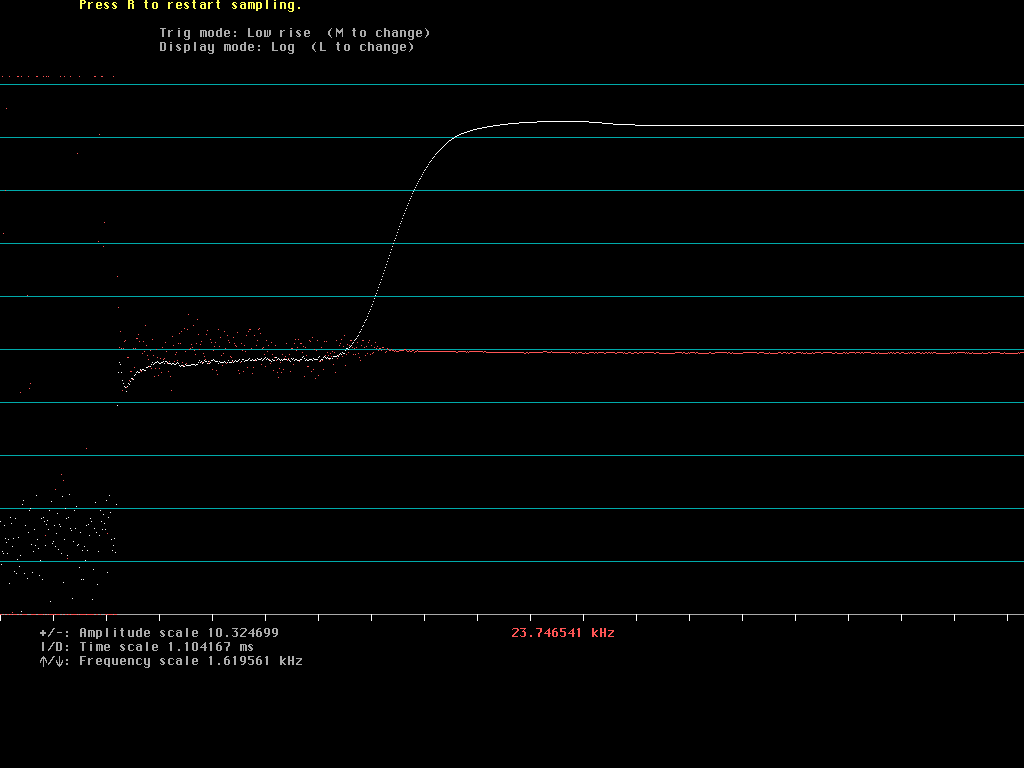
|
|
Fig.8. The same data as in fig. 7 with 10 dB per division for the RF envelope. From fig. 7 we can conclude that the ALC is reducing the gain a little, and that it is done rapidly in a way that increases the bandwidth of the keying clicks significantly, but there are no oscillations since the gain within the ALC loop (it is a servo system) is pretty low. Fig. 8 does not reveal anything unexpected. The abrupt switch on is now at a level of about -45 dB. At full power, the key-up transition looks fine as can be seen in figures 9 and 10. |

|
|
Fig.9. The RF envelope (white) of a key-up transition in linear amplitude scale and the frequency (red) of an IC706MKIIG operated like in fig.6. |
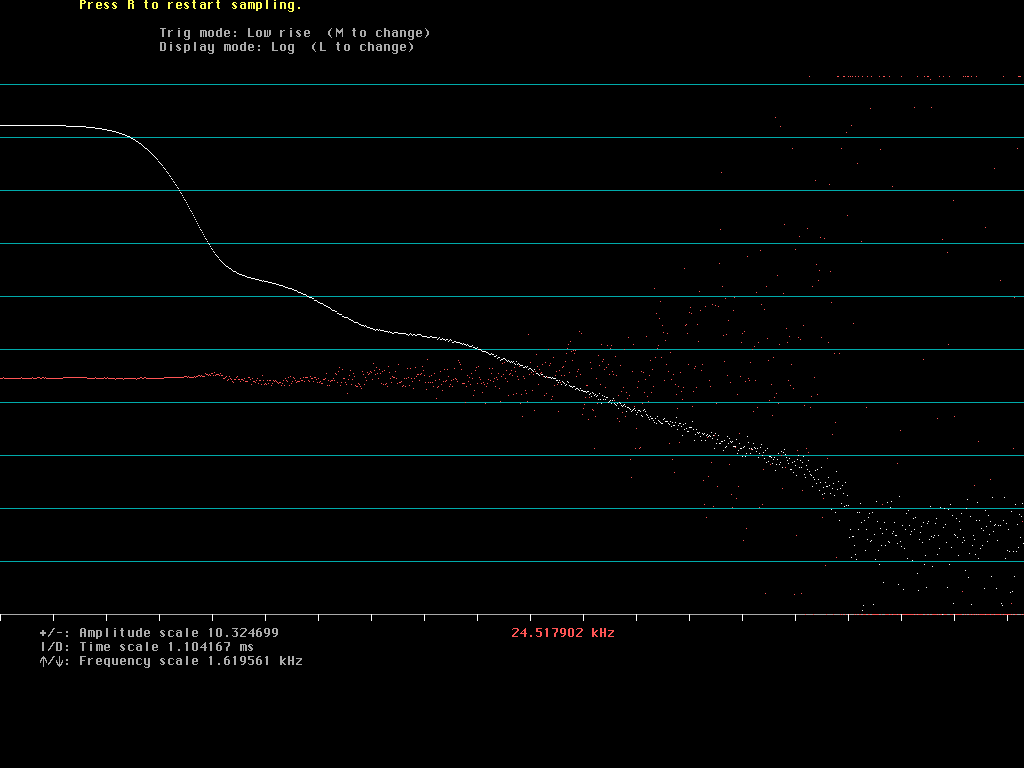
|
|
Fig.10. The RF envelope (white) of a key-up transition in logarithmic scale, 10 dB per division and the frequency (red) of an IC706MKIIG operated like in fig.6. IC202Fig. 11 shows the spectrum of an IC202 which is operated at 13.8 V with an external supply. This unit suffers from severe keying clicks. |

|
|
Fig.11. The spectrum of a hand keyed IC202. Figures 12 and 13 show the key-down transition for this unit in linear amplitude scale and logarithmic scale respectively. There are sudden jumps in the amplitude and these jumps are associated with sudden jumps in frequency. The mechanism is unknown, probably there is an instability in some bias circuitry because no parasitic oscillations were found. |
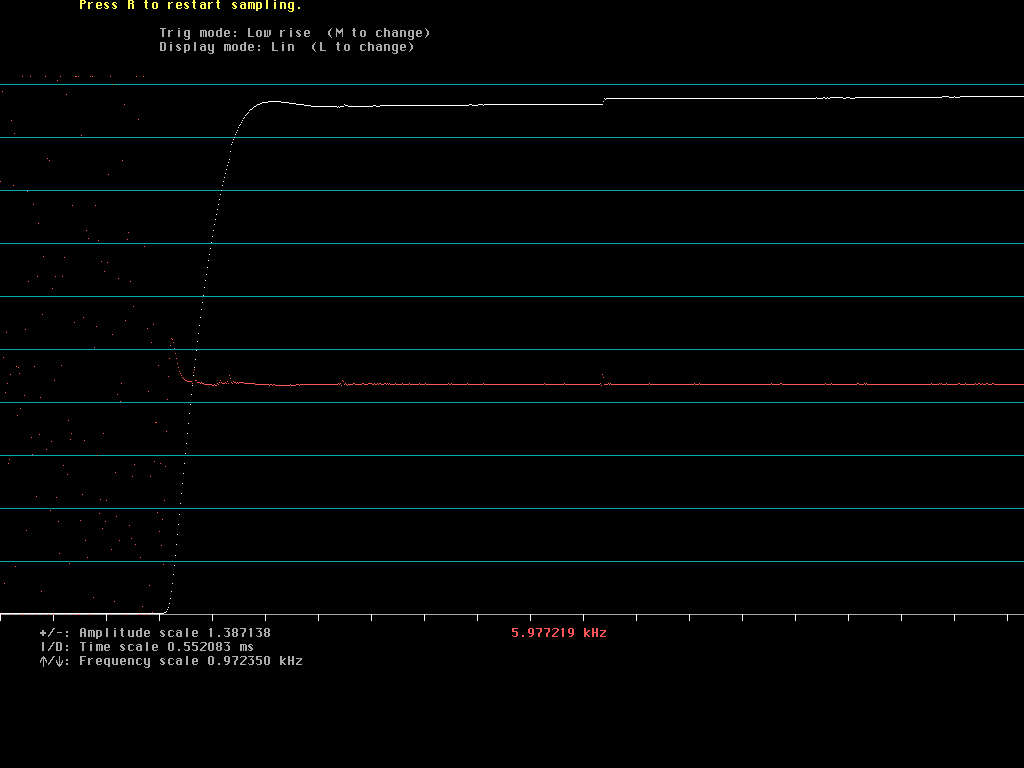
|
|
Fig.12. The key-down transition of a IC202. Linear amplitude scale. |

|
|
Fig.13. The key-down transition of a IC202. Logarithmic amplitude scale, 10 dB per division. Figures 14 and 15 show the key-up transition of the IC202 in linear amplitude and logarithmic scales respectively. The envelope is wery ugly. It is obvious that it is associated with strong keying clicks because of the sudden very steep fall-off. This transient behaviour happens after the power has first fallen, then stayed constant for a while and is probably caused by a changed operating point due to rectification of the drive power. It looks like an amplifier that has been driven into class C and that stays there during key-up because of long time constants in the bias circuitry. Note that the transient is associated with a phase jump that corresponds to a frequency jump of nearly 2 kHz. This FM keying click contains substantial energy over the entire 90 kHz passband and may be more important than the AM keying click. This old IC202 is probably out of tune. It sounds much better at reduced power supply voltages, but the correct adjustment would be to reduce the gain somewhere to avoid saturation. |
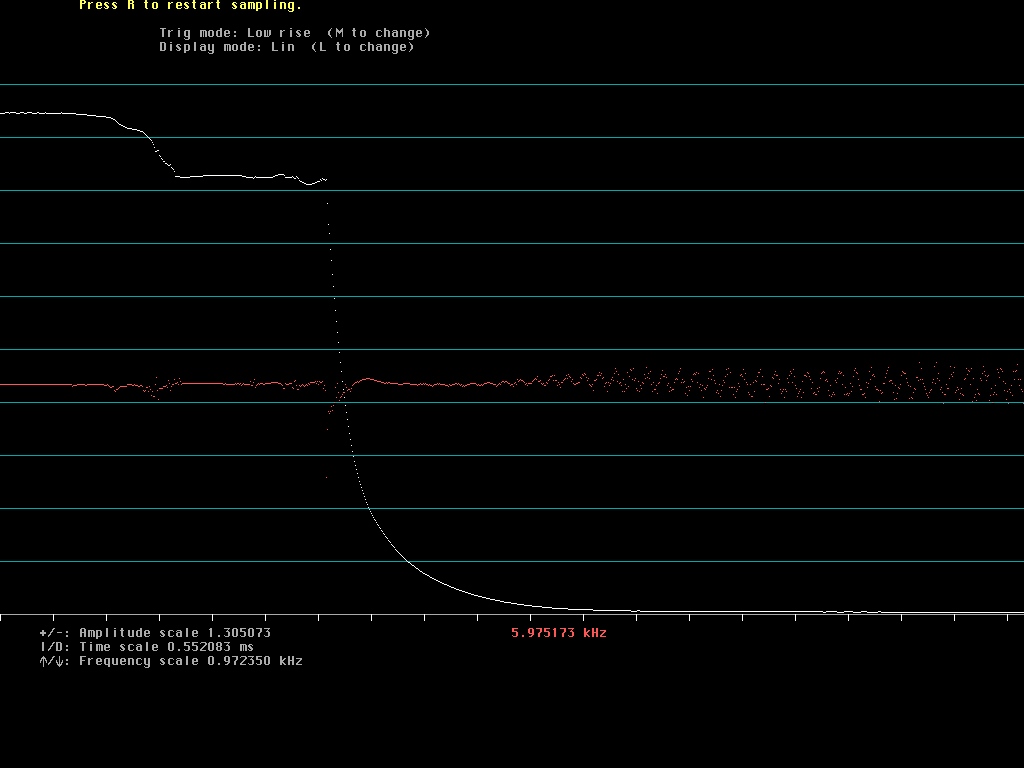
|
|
Fig.14. The key-up transition of a IC202. Linear amplitude scale. |
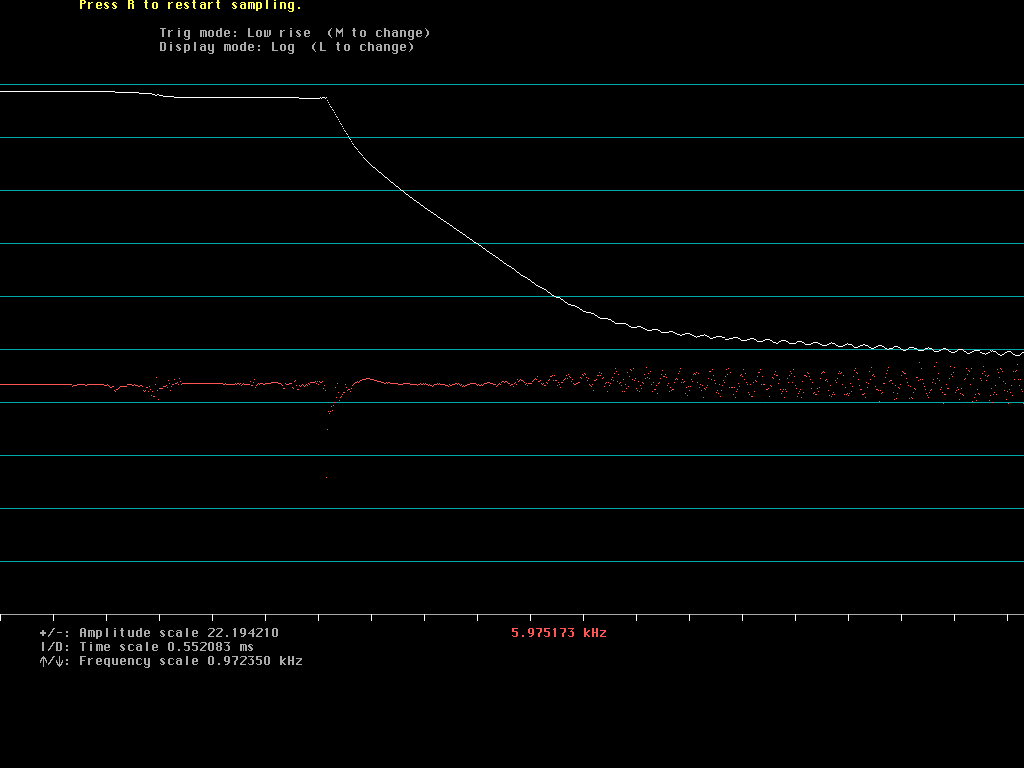
|
|
Fig.15. The key-up transition of a IC202. Logarithmic amplitude scale, 10 dB per division. To SM 5 BSZ Main Page |